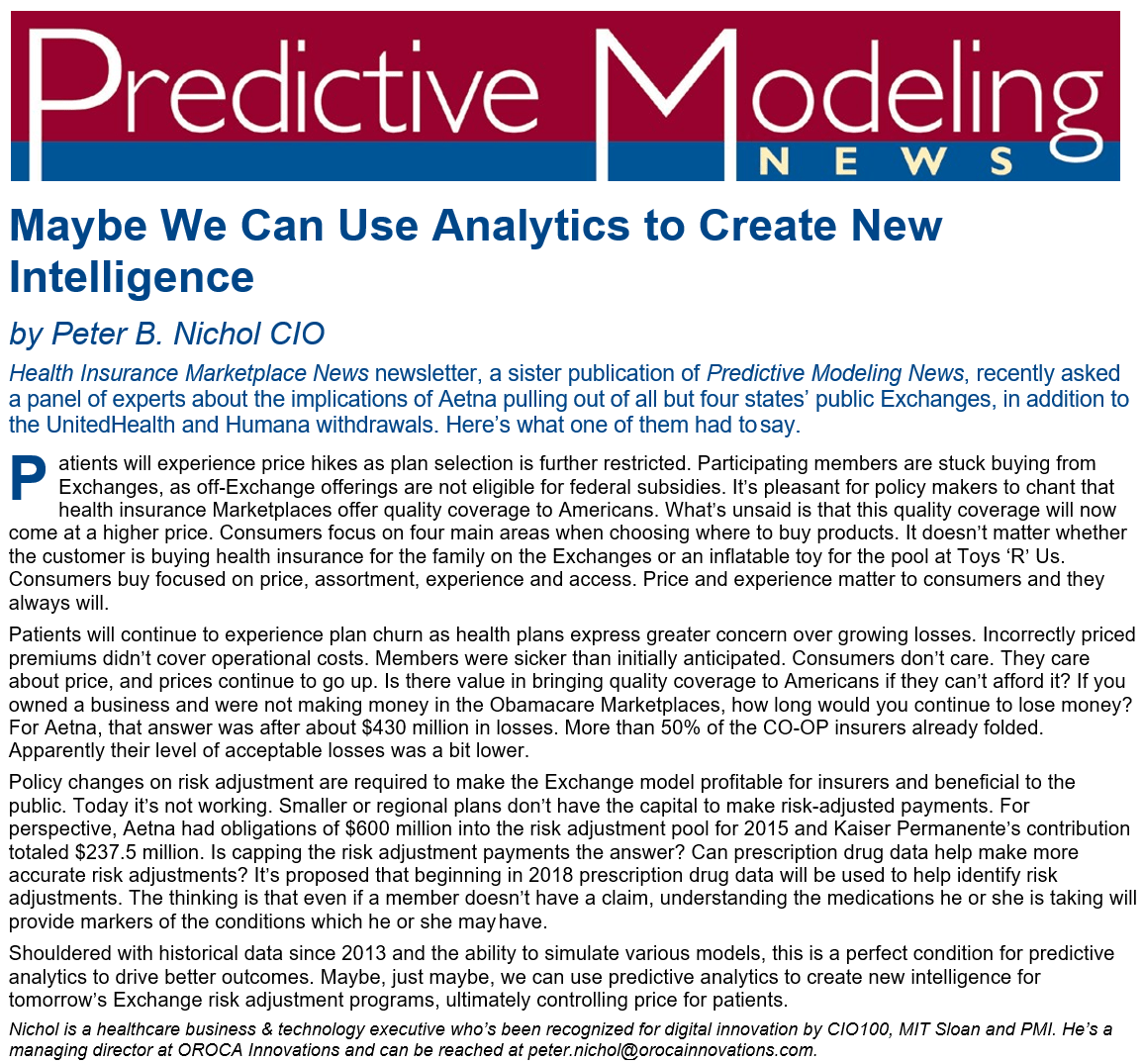Predictive Modeling News, recently asked a panel of experts about the implications of Aetna pulling out of all but four states’ public Exchanges, in addition to the UnitedHealth and Humana withdrawals. Here’s what Peter Nichol had to say.
Patients will experience price hikes as plan selection is further restricted. Participating members are stuck buying from Exchanges, as off-Exchange offerings are not eligible for federal subsidies. It’s pleasant for policy makers to chant that health insurance Marketplaces offer quality coverage to Americans. What’s unsaid is that this quality coverage will now come at a higher price. Consumers focus on four main areas when choosing where to buy products. It doesn’t matter whether the customer is buying health insurance for the family on the Exchanges or an inflatable toy for the pool at Toys ‘R’ Us. Consumers buy focused on price, assortment, experience and access. Price and experience matter to consumers and they always will.
Patients will continue to experience plan churn as health plans express greater concern over growing losses. Incorrectly priced premiums didn’t cover operational costs. Members were sicker than initially anticipated. Consumers don’t care. They care about price, and prices continue to go up. Is there value in bringing quality coverage to Americans if they can’t afford it? If you owned a business and were not making money in the Obamacare Marketplaces, how long would you continue to lose money? For Aetna, that answer was after about $430 million in losses. More than 50% of the CO-OP insurers already folded. Apparently, their level of acceptable losses was a bit lower.
Policy changes on risk adjustment are required to make the Exchange model profitable for insurers and beneficial to the public. Today it’s not working. Smaller or regional plans don’t have the capital to make risk-adjusted payments. For perspective, Aetna had obligations of $600 million into the risk adjustment pool for 2015 and Kaiser Permanente’s contribution totaled $237.5 million. Is capping the risk adjustment payments the answer? Can prescription drug data help make more accurate risk adjustments? It’s proposed that beginning in 2018 prescription drug data will be used to help identify risk adjustments. The thinking is that even if a member doesn’t have a claim, understanding the medications he or she is taking will provide markers of the conditions which he or she may have.
Shouldered with historical data since 2013 and the ability to simulate various models, this is a perfect condition for predictive analytics to drive better outcomes. Maybe, just maybe, we can use predictive analytics to create new intelligence for tomorrow’s Exchange risk adjustment programs, ultimately controlling price for patients.
Nichol is a healthcare business & technology executive who’s been recognized for digital innovation by CIO100, MIT Sloan, and PMI. He’s a managing director at OROCA Innovations and can be reached at peter.nichol@orocainnovations.com.
Reference

